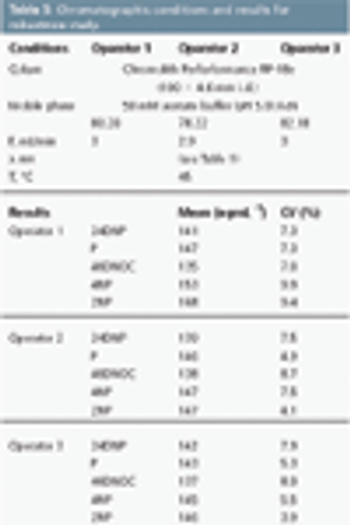
LCGC Europe
An isocratic HPLC method for the determination of phenol and nitrophenols (4-nitrophenol, 2-nitrophenol, 4,6-dinitro-o-cresol and 2,4-dinitrophenol) has been developed and validated using 2-chlorophenol as internal standard (IS) and a monolithic column in tap water samples. Prior to HPLC, the method requires solid-phase extraction (SPE) using polymeric Lichrolut EN cartridges. The method development involved the study of methanol and acetonitrile as organic modifiers, pH and flow-rate using a Chromolith RP-18e (150 mm × 4.6 mm I.D.) column. After comparing the performance of the separations obtained with both organic modifiers, the optimum separation of these compounds was achieved using 50 mM acetate buffer (pH 5.0)-acetonitrile (80:20, v/v) as mobile phase, 3 mL min-¹ flow-rate and UV detection at maximum absorbance wavelength. Under these conditions, all analytes were separated (Rs > 2.0) in an analysis time of less than 3.5 min and the most important validation parameters were evaluated. The recoveries obtained in the accuracy test for all phenols studied were in the 90–112% range using a preconcentration factor of 40, and the intraday and interday precisions [expressed as coefficient of variation (CV)] were smaller than 15%. Finally, the proposed method was applied to wastewater samples from several industries.






